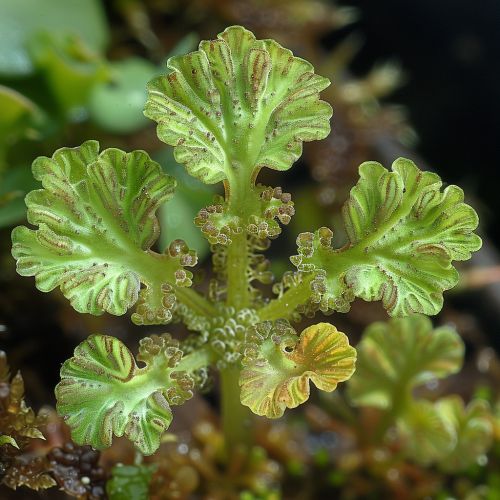Liverwort
Introduction
Liverworts, belonging to the division Marchantiophyta, are non-vascular plants that are commonly found in moist habitats across the globe. They are one of the oldest groups of land plants, with fossil records dating back to the Paleozoic Era. Liverworts play a significant role in the ecosystem, contributing to soil formation and providing habitats for numerous microorganisms and small animals.


Classification and Diversity
Liverworts are classified under the division Marchantiophyta, which is further divided into three classes: Marchantiopsida, Jungermanniopsida, and Anthocerotopsida. These classes encompass over 9000 species of liverworts, distributed across various habitats worldwide. The diversity within this division is remarkable, with species exhibiting a wide range of morphological and physiological adaptations to survive in different environments.
Morphology
Liverworts exhibit a wide range of morphological diversity, but all species share a common body plan. The plant body, known as a thallus, is typically flat and ribbon-like, often divided into two layers. The upper layer, or epidermis, contains pores for gas exchange, while the lower layer, or cortex, is involved in nutrient absorption. Some species have leaf-like structures, while others have a more simple, thalloid form.
Reproduction
Liverworts reproduce both sexually and asexually. Sexual reproduction involves the formation of specialized structures called archegonia (female) and antheridia (male). After fertilization, a sporophyte develops within the archegonium, eventually releasing spores that can grow into new plants. Asexual reproduction occurs through the production of gemmae, small pieces of tissue that can develop into new plants when detached from the parent plant.
Ecology and Distribution
Liverworts are found in a wide range of habitats, from tropical rainforests to arctic tundra. They are particularly abundant in moist environments, such as riverbanks, forests, and swamps. Liverworts play a crucial role in these ecosystems, contributing to soil formation and providing habitats for numerous microorganisms and small animals.
Economic Importance
While liverworts are not typically used directly by humans, they have several indirect economic impacts. They contribute to soil formation and nutrient cycling, which can benefit agriculture. Some species are also used in traditional medicine in various cultures, although the scientific evidence supporting these uses is limited.
Conservation
Many liverwort species are threatened by habitat loss, pollution, and climate change. Conservation efforts for these plants often involve habitat protection and the establishment of seed banks. However, more research is needed to understand the specific threats facing different liverwort species and to develop effective conservation strategies.
